... or GET UNDER THE MASK - OR WORK AROUND IT
A CIVILIZED PERSON LOOKING QUITE BORING. (BELOW)
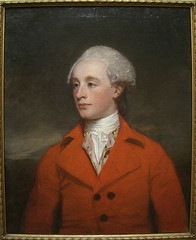
ABOVE: Mr. Morley, before 1802 (Wikimedia)
artist: George Romney (1734-1802), English painter
ANOTHER CIVILIZED PERSON JUST A TAD LESS BORING LOOKING (BELOW)
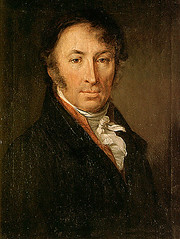
ABOVE: Nikolay Karamzin,1818 (Wikimedia)
artist: Vasily Tropinin (1776-1857), Russian painter
RENOIR NOT "GESTURING" BUT SITTING IN AN ODD PLACE, WHICH IS ALSO EXPRESSIVE. HE LOOKS SELF-CONFIDENT, AND COMFORTABLE IN CASUAL CIRCUMSTANCES. HE ALSO LOOKS ALERT, AND "RECEPTIVE" (NOT OVER-ASSERTIVE, JUST PAYING ATTENTION) (BELOW)
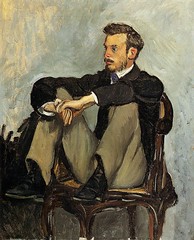
ABOVE: Renoir, 1867 (The Athenaeum)
artist: Frederic Bazille (1841-1870), French painter
A WOMAN WITH PLENTY OF SELF-ESTEEM YET WHO WISHES TO BE ALONE. BUT WILLING TO FACE WHAT SHE MUST FACE...SIGH (BELOW)
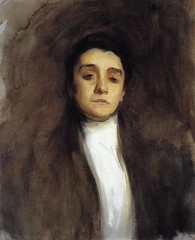
ABOVE: Eleanora Duse, c. 1893 (Wikimedia)
artist: John Singer Sargent (1856-1925), American
A CHEERY, INTELLIGENT AND KIND BUT HONEST WOMAN I'D LIKE TO BE BEST FRIENDS WITH. SHE'S NOT LOUD AND AGGRESSIVE, BUT SHE GETS ALONG FINE WITH PEOPLE - YET SHE'S COMFORTABLE BEING ALONE. (BELOW)
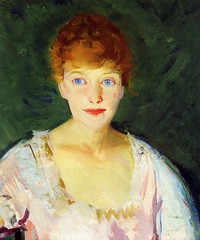
ABOVE: Lucie (Wikimedia)
artist: Robert Henri (1865-1929), American
A MODEST YET FRIENDLY MAN WHO WOULD BE NICE TO BE SITTING NEXT TO WHILE WAITING FOR SOMETHING. HE LOOKS LIKE A GOOD LISTENER, AND SYMPATHETIC AND PROBABLY ENCOURAGING. IT WOULD PROBABLY BE NICE TO HAVE SUPPER WITH HIM...AND KEEP HIM FOR A FRIEND. (BELOW)
![]()
ABOVE: Frans Post
artist: Frans Hals (c. 1580-1666), Dutch painter
A WOMAN WHO EVIDENTLY DID NOT WANT HER PICTURE PAINTED - SHE WANTS TO BE LEFT WITH HER OWN PRIVATE THOUGHTS. SHE LOOKS NOT SHY SO MUCH AS EMBARRASSED AND UNCOMFORTABLE BEING IN THE SPOTLIGHT. AND SHE IS NOT IN FULL CONTROL OF HER EMOTIONS. SHE MAY BE QUITE AN INTERESTING PERSON, AND PROBABLY IS, BUT THE PICTURE DOESN'T SAY "WHY" SHE MIGHT BE INTERESTING, ONLY THAT SHE'S VERY UNCOMFORTABLE, LIKE A FISH OUT OF WATER.(BELOW)

ABOVE: Katherine Pratt
artist: John Singer Sargent
JUST A PERSON - A GENERIC WOMAN - NOT INTERESTING (BELOW)
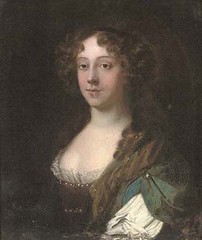
Jane Needham
artist: Mary Beale (1646-1692), English painter
(Comments above the pictures are my first reactions to the subjects, the point being that some pictures tell me a lot more than others about the people in them.)
THE MASKS "CIVILIZED PEOPLE" WEAR
Most everyone who has reached the self-conscious age (what is it now, about eight years old? It used to be about age thirteen) has a "mask" that they wear while around other people (often they wear slightly different masks for different occasions...in many cases even in their own homes, and occasionally when alone). This "mask" (or "persona") is "how they wish to appear to others." The mask often consists solely of self-control, but sometimes it includes dress, hairstyle, makeup, and other accessories, even the milieu in which they allow themselves to be seen.
Some people don't have a mask, because they are quite unself-conscious or they just don't care what others think of them or whether they're upsetting people. But most of us with self-awareness try to control to some degree our facial expressions, language, and gestures so that we don't appear like five-year-olds or savages and make everyone wish we would just go away.
We are born with no mask at all, of course, as is so easily seen in babies, who let loose with every possible expression and gesture without any restraint during every waking moment ... and sometimes while sleeping. Of course there are some adults who seldom even try to hold back their emotions and in any case are unable to...jumping with joy at the slightest delight, crying easily, hitting or slapping people they feel offended by, stomping their feet when angry, and so on, but these people, who embarrass most of the rest of us, are few and far between. Generally, when we paint a portrait, the subject is a person who is not so unrestrained at least most of the time - they are "civilized" people, after all - and showing them with contorted faces and unconstrained body language would not portray them as they usually are (physically, at least), and there would be no point in making the portrait in that case.
Yet we don't want to simply show the mask...the mask, after all, is what covers up important things that we don't want people to know about us -- our attitudes and feelings toward life that may be in conflict with how we attempt to appear. The mask is important, as it is something the person has chosen, but what's underneath the mask is also important. In other words, we want to show both the inside and the outside of a person. Otherwise the person will look very, very boring, as uncomplex people are.
THE CHALLENGE OF MAKING A TRUTHFUL PICTURE OF SOMEONE WHO IS WEARING A MASK
In "civilized" societies we are taught from childhood to control our gestures and the looks on our faces (and our language) in order to cover up actions and reactions that come naturally to us. We are especially made to control ourselves when we are in public. And so we begin to acquire our mask very early in life, though it isn't until we are really self-aware (as mentioned above) that the mask starts to set. Once set, we may still experience strong feelings inside, but perhaps not as strongly after we become accustomed to not displaying them outwardly. In any case, painting portraits of individuals is often a difficult challenge because we are not able to use dramatic gestures and facial expressions to make clear the personality of a person, but must rely on less obvious clues to show what a person is typically like as far as their relationship with the outside world ... or, in fact, with the inside world -- with themselves and their own private thoughts.
And so we must figure out how to portray people's attitudes, and how they meet life's challenges -- or, in other words, we have to show their true "character" -- without relying mainly - or only - on facial expression and bodily gestures. Unless, of course, we want to portray someone who is very physically expressive, and this kind of person is probably fun to paint, and easier to paint (or draw), because their bodies are so helpful in revealing what kind of people they are. These subjects include babies and young children, as well as some adults.
Those who want more of a challenge, however, will choose a subject who is at least somewhat reserved in demeanor when it comes to their public persona, but who has a strong personality nonetheless. The challenge is to show the personality and character of that person even though he or she is sitting or standing still and not contorting his or her face like an old-time stage actor. (Painting or drawing people with very lackluster personalities with the intention of trying to show their personality is impossible because there is no personality; if you want to use them as subjects that are meant to look like they have no "life force" within them, that's a different story.)
THERE ARE MANY, MANY PORTRAITS OF BORING-LOOKING PEOPLE
I look at pictures of paintings and drawings just about every single day, sometimes dozens and dozens of them at one sitting, and I have seen many, many portraits that are quite "boring" even though done by very well thought of artists ... sometimes even well thought of by myself. They are often very fine pictures in a way, but they are - again - boring. The pictures themselves may be very interesting and well-done but the subjects look like there was no reason to paint them because they look painfully dull. I'm sure they were painted for the sitter or his or her family and represent the way the sitter wished to appear to others or the family wanted them to appear to others, and this is only natural (I would be the same way, hoping the artist would show me as I think of myself as being). Perhaps the artists hardly know their sitters in many cases, and don't have much to go on besides the demands and/or expectations of the person who is paying for the portrait.
So many of these portraits look the same -- and the person portrayed is just not interesting. You hope and wonder if they have a life (or a "personality"), because it sure doesn't look like it in the picture. They look like they might as well be invisible.
SO WHAT CAN BE DONE, THEN?
Assuming the artist wants to show a person's unique "self," i.e., to make a picture of an individual person rather than a generic one, it seems obvious that they absolutely must get to know the subject as well as they possibly can, or at least find out what the sitter wishes to project. But how do they show what someone is "really like" if they're sitting or standing in a typical pose that shows nothing other than that the sitter has learned to look composed, pleasant, and "natural" according to the style of the day? Or else they are wearing the type of clothing the artist has chosen, posing against a background the artist has put them in, and assuming a pose the artist - or photographer - has coached them into -- the clothing type, background, and pose being chosen by him or her from a limited amount of "standard" choices. (And by the way, how many studio portrait photographs have you seen that look like this? Tell me, are they not truly boring, too?)
What has to be done is this: The entire picture must be composed in such a way that it will help us understand the personality and character of the subject. Copying the person's exterior appearance is not nearly enough and often the exterior appearance may tell you very little about that person; in fact it isn't important or even desirable that you get every detail of what you see in front of you - as it would be seen in a detailed photograph. Only what contributes to your idea of what this person is like should be there, or should be emphasized, not every single thing that your eyes see in front of them.
The human being (perhaps I should say "the body") in front of the artist is not the only thing he or she must be concerned with. The body should be in a context. The entire picture contributes to our idea of what the person is like, and this is where "composition" comes in. In fact, it occurs to me that a good (and interesting) exercise might be to use a painting of a person that someone else has done, getting the physical "likeness" as it is in that picture (same basic facial expression and pose, etc.), and try to change the person's perceived personality and character by how you re-compose the picture around these basic facts.
HOW DO YOU DO THIS?
How do you do this? Some examples: change colors and/or darkness and lightness and intensity of colors, change dark/light contrasts, change the size and/or placement of the subject and other objects in relation to the outside edges of the picture, change values, change the direction of the light, change what is emphasized, change the style of the chair, add appropriate (to your idea) objects and remove inappropriate ones. And, also, you can and even should use a certain amount of bodily gesture, just so it's subtle, and very natural to the person and helps us to understand what he or she is like. There is much more you can do - you will think of things as you go along. It would be important to always keep in mind exactly what you want to say about the subject so that you don't just do whatever might be "fun" or "interesting" to do and end up with a different personality than you intended. The result might be exciting to look at, but if it wasn't an exercise and were a real portrait of someone you were painting then you would not have done them justice. The idea isn't to have fun (though you might have fun anyway; I would hope so) but to do the person justice.
_____
NOTES:
1) If you try the above-suggested exercise, maybe you could leave a comment in which you add a URL that would lead us to the "before" and "after" pictures. I would love to see them and probably others would, too.
2) I will write more on portraits.
A CIVILIZED PERSON LOOKING QUITE BORING. (BELOW)

ABOVE: Mr. Morley, before 1802 (Wikimedia)
artist: George Romney (1734-1802), English painter
ANOTHER CIVILIZED PERSON JUST A TAD LESS BORING LOOKING (BELOW)

ABOVE: Nikolay Karamzin,1818 (Wikimedia)
artist: Vasily Tropinin (1776-1857), Russian painter
RENOIR NOT "GESTURING" BUT SITTING IN AN ODD PLACE, WHICH IS ALSO EXPRESSIVE. HE LOOKS SELF-CONFIDENT, AND COMFORTABLE IN CASUAL CIRCUMSTANCES. HE ALSO LOOKS ALERT, AND "RECEPTIVE" (NOT OVER-ASSERTIVE, JUST PAYING ATTENTION) (BELOW)

ABOVE: Renoir, 1867 (The Athenaeum)
artist: Frederic Bazille (1841-1870), French painter
A WOMAN WITH PLENTY OF SELF-ESTEEM YET WHO WISHES TO BE ALONE. BUT WILLING TO FACE WHAT SHE MUST FACE...SIGH (BELOW)

ABOVE: Eleanora Duse, c. 1893 (Wikimedia)
artist: John Singer Sargent (1856-1925), American
A CHEERY, INTELLIGENT AND KIND BUT HONEST WOMAN I'D LIKE TO BE BEST FRIENDS WITH. SHE'S NOT LOUD AND AGGRESSIVE, BUT SHE GETS ALONG FINE WITH PEOPLE - YET SHE'S COMFORTABLE BEING ALONE. (BELOW)

ABOVE: Lucie (Wikimedia)
artist: Robert Henri (1865-1929), American
A MODEST YET FRIENDLY MAN WHO WOULD BE NICE TO BE SITTING NEXT TO WHILE WAITING FOR SOMETHING. HE LOOKS LIKE A GOOD LISTENER, AND SYMPATHETIC AND PROBABLY ENCOURAGING. IT WOULD PROBABLY BE NICE TO HAVE SUPPER WITH HIM...AND KEEP HIM FOR A FRIEND. (BELOW)
ABOVE: Frans Post
artist: Frans Hals (c. 1580-1666), Dutch painter
A WOMAN WHO EVIDENTLY DID NOT WANT HER PICTURE PAINTED - SHE WANTS TO BE LEFT WITH HER OWN PRIVATE THOUGHTS. SHE LOOKS NOT SHY SO MUCH AS EMBARRASSED AND UNCOMFORTABLE BEING IN THE SPOTLIGHT. AND SHE IS NOT IN FULL CONTROL OF HER EMOTIONS. SHE MAY BE QUITE AN INTERESTING PERSON, AND PROBABLY IS, BUT THE PICTURE DOESN'T SAY "WHY" SHE MIGHT BE INTERESTING, ONLY THAT SHE'S VERY UNCOMFORTABLE, LIKE A FISH OUT OF WATER.(BELOW)

ABOVE: Katherine Pratt
artist: John Singer Sargent
JUST A PERSON - A GENERIC WOMAN - NOT INTERESTING (BELOW)

Jane Needham
artist: Mary Beale (1646-1692), English painter
(Comments above the pictures are my first reactions to the subjects, the point being that some pictures tell me a lot more than others about the people in them.)
THE MASKS "CIVILIZED PEOPLE" WEAR
Most everyone who has reached the self-conscious age (what is it now, about eight years old? It used to be about age thirteen) has a "mask" that they wear while around other people (often they wear slightly different masks for different occasions...in many cases even in their own homes, and occasionally when alone). This "mask" (or "persona") is "how they wish to appear to others." The mask often consists solely of self-control, but sometimes it includes dress, hairstyle, makeup, and other accessories, even the milieu in which they allow themselves to be seen.
Some people don't have a mask, because they are quite unself-conscious or they just don't care what others think of them or whether they're upsetting people. But most of us with self-awareness try to control to some degree our facial expressions, language, and gestures so that we don't appear like five-year-olds or savages and make everyone wish we would just go away.
We are born with no mask at all, of course, as is so easily seen in babies, who let loose with every possible expression and gesture without any restraint during every waking moment ... and sometimes while sleeping. Of course there are some adults who seldom even try to hold back their emotions and in any case are unable to...jumping with joy at the slightest delight, crying easily, hitting or slapping people they feel offended by, stomping their feet when angry, and so on, but these people, who embarrass most of the rest of us, are few and far between. Generally, when we paint a portrait, the subject is a person who is not so unrestrained at least most of the time - they are "civilized" people, after all - and showing them with contorted faces and unconstrained body language would not portray them as they usually are (physically, at least), and there would be no point in making the portrait in that case.
Yet we don't want to simply show the mask...the mask, after all, is what covers up important things that we don't want people to know about us -- our attitudes and feelings toward life that may be in conflict with how we attempt to appear. The mask is important, as it is something the person has chosen, but what's underneath the mask is also important. In other words, we want to show both the inside and the outside of a person. Otherwise the person will look very, very boring, as uncomplex people are.
THE CHALLENGE OF MAKING A TRUTHFUL PICTURE OF SOMEONE WHO IS WEARING A MASK
In "civilized" societies we are taught from childhood to control our gestures and the looks on our faces (and our language) in order to cover up actions and reactions that come naturally to us. We are especially made to control ourselves when we are in public. And so we begin to acquire our mask very early in life, though it isn't until we are really self-aware (as mentioned above) that the mask starts to set. Once set, we may still experience strong feelings inside, but perhaps not as strongly after we become accustomed to not displaying them outwardly. In any case, painting portraits of individuals is often a difficult challenge because we are not able to use dramatic gestures and facial expressions to make clear the personality of a person, but must rely on less obvious clues to show what a person is typically like as far as their relationship with the outside world ... or, in fact, with the inside world -- with themselves and their own private thoughts.
And so we must figure out how to portray people's attitudes, and how they meet life's challenges -- or, in other words, we have to show their true "character" -- without relying mainly - or only - on facial expression and bodily gestures. Unless, of course, we want to portray someone who is very physically expressive, and this kind of person is probably fun to paint, and easier to paint (or draw), because their bodies are so helpful in revealing what kind of people they are. These subjects include babies and young children, as well as some adults.
Those who want more of a challenge, however, will choose a subject who is at least somewhat reserved in demeanor when it comes to their public persona, but who has a strong personality nonetheless. The challenge is to show the personality and character of that person even though he or she is sitting or standing still and not contorting his or her face like an old-time stage actor. (Painting or drawing people with very lackluster personalities with the intention of trying to show their personality is impossible because there is no personality; if you want to use them as subjects that are meant to look like they have no "life force" within them, that's a different story.)
THERE ARE MANY, MANY PORTRAITS OF BORING-LOOKING PEOPLE
I look at pictures of paintings and drawings just about every single day, sometimes dozens and dozens of them at one sitting, and I have seen many, many portraits that are quite "boring" even though done by very well thought of artists ... sometimes even well thought of by myself. They are often very fine pictures in a way, but they are - again - boring. The pictures themselves may be very interesting and well-done but the subjects look like there was no reason to paint them because they look painfully dull. I'm sure they were painted for the sitter or his or her family and represent the way the sitter wished to appear to others or the family wanted them to appear to others, and this is only natural (I would be the same way, hoping the artist would show me as I think of myself as being). Perhaps the artists hardly know their sitters in many cases, and don't have much to go on besides the demands and/or expectations of the person who is paying for the portrait.
So many of these portraits look the same -- and the person portrayed is just not interesting. You hope and wonder if they have a life (or a "personality"), because it sure doesn't look like it in the picture. They look like they might as well be invisible.
SO WHAT CAN BE DONE, THEN?
Assuming the artist wants to show a person's unique "self," i.e., to make a picture of an individual person rather than a generic one, it seems obvious that they absolutely must get to know the subject as well as they possibly can, or at least find out what the sitter wishes to project. But how do they show what someone is "really like" if they're sitting or standing in a typical pose that shows nothing other than that the sitter has learned to look composed, pleasant, and "natural" according to the style of the day? Or else they are wearing the type of clothing the artist has chosen, posing against a background the artist has put them in, and assuming a pose the artist - or photographer - has coached them into -- the clothing type, background, and pose being chosen by him or her from a limited amount of "standard" choices. (And by the way, how many studio portrait photographs have you seen that look like this? Tell me, are they not truly boring, too?)
What has to be done is this: The entire picture must be composed in such a way that it will help us understand the personality and character of the subject. Copying the person's exterior appearance is not nearly enough and often the exterior appearance may tell you very little about that person; in fact it isn't important or even desirable that you get every detail of what you see in front of you - as it would be seen in a detailed photograph. Only what contributes to your idea of what this person is like should be there, or should be emphasized, not every single thing that your eyes see in front of them.
The human being (perhaps I should say "the body") in front of the artist is not the only thing he or she must be concerned with. The body should be in a context. The entire picture contributes to our idea of what the person is like, and this is where "composition" comes in. In fact, it occurs to me that a good (and interesting) exercise might be to use a painting of a person that someone else has done, getting the physical "likeness" as it is in that picture (same basic facial expression and pose, etc.), and try to change the person's perceived personality and character by how you re-compose the picture around these basic facts.
HOW DO YOU DO THIS?
How do you do this? Some examples: change colors and/or darkness and lightness and intensity of colors, change dark/light contrasts, change the size and/or placement of the subject and other objects in relation to the outside edges of the picture, change values, change the direction of the light, change what is emphasized, change the style of the chair, add appropriate (to your idea) objects and remove inappropriate ones. And, also, you can and even should use a certain amount of bodily gesture, just so it's subtle, and very natural to the person and helps us to understand what he or she is like. There is much more you can do - you will think of things as you go along. It would be important to always keep in mind exactly what you want to say about the subject so that you don't just do whatever might be "fun" or "interesting" to do and end up with a different personality than you intended. The result might be exciting to look at, but if it wasn't an exercise and were a real portrait of someone you were painting then you would not have done them justice. The idea isn't to have fun (though you might have fun anyway; I would hope so) but to do the person justice.
_____
NOTES:
1) If you try the above-suggested exercise, maybe you could leave a comment in which you add a URL that would lead us to the "before" and "after" pictures. I would love to see them and probably others would, too.
2) I will write more on portraits.
